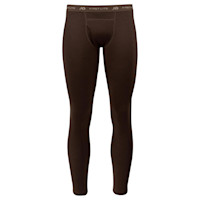One of my favorite ways to spend time during late December or throughout January is to pheasant hunt with my Labs. Busting through cattail sloughs in search of public land roosters is as enjoyable to me as deer hunting is, and I often invite people to hunt with me. I always warn them that they’ll be working hard, so they should dress lightly. They never listen.
They look at the forecast, which often calls for highs in the single digits or lower, and then they layer way up. Then they sweat, overheat, shed layers, and get cold. It never fails. While it’s easy to understand there is a clothing necessity difference between hiking all day in the cold weather, and sitting still like you would on a treestand, the practical realities of both often escape us.
It takes experience to not overheat on your way to a treestand (or during a day-long pheasant hunt), and it takes the right planning not to freeze out when you sit. This is intuitive to most of us, yet deer hunters often get it wrong.
Don’t Sweat It
Wired to Hunt Contributor, Beau Martonik, is a public land bowhunting expert from Pennsylvania who is no stranger to late-season hunts. He spends time in several states out East, and has hunted Canadian whitetails in temperatures as cold as negative 24 degrees. He is also adamant that you have to go in light enough to not start sweating.
“The first thing I tell everyone about staying warm is that they should pack in their outer layers,” Martonik said. “When you’re moving, it’s easy to stay warm. But if you sweat on the way in, you’ll get cold way too fast, and it’ll ruin your hunt.”
This is hard to do. I hunt Minnesota and Wisconsin throughout the last days of the season, and occasionally face temperatures that never climb above zero throughout the day. When you know you’re going to walk out into that, it’s easy to talk yourself into wearing extra layers, but that’s a mistake. It’ll be cold for the first few minutes, but that’s so much better than getting to your setup and being sweaty.
Wear the Right Layers
Base layers, like those made from Merino wool, are a huge asset during later hunts. The goal should always be warmth-to-weight because you don’t want to be so bulky you can’t move without making noise. Mid-layers will vary, but I often go with a puffy, full-of-insulation type of jacket if I’m gun-hunting. If I’m bowhunting, it’ll be a heavy vest typically, because I want a little more articulation with my arms to draw my bow. Outer layers are always heavy and contain a key feature that is nonnegotiable for the coldest of hunts.
“Whatever you use as a next-to-skin and mid-layer is up to personal preference,” Martonik said. “But your outer layer should be windproof. That is essential.”
Keeping the wind from leaching through your outer layers is the difference between sitting comfortably for a few hours, or being miserable and climbing down early. This goes for
Arctic fronts are carried on 30 mph winds and the seemingly benign 10 mph wind that doesn’t feel like much more than a breeze when you’re loading up your gear in the driveway.
Extremities & Extras
Chemical warmers are cheap, and quite possibly, a hunter’s best friend during cold hunts. I use to think they were for, uh, lesser hunters, but then I started taking my twin daughters out with me. It didn’t take long to realize it was really nice to have warm(ish) toes, hands, and a couple of large hand warmers stuck to my base layers to deliver a few hours of extra heat to my core.
Do what you have to do to keep warm. Pay attention to your hands and your feet, because they’ll get cold first. Wear an extra hat if you need it, load up a muff with hand warmers, and do what you need to stave off the misery. Take notice of how you feel during your hunts to tweak your setup. What gets cold first? What clothing seems to work best for you?
Tailor your setup to your needs through some trial and error, and keep hunting. While it’s not always easy, or all that enjoyable to sit through blistering cold hunts, it is worth it as long as you figure out how to stay warm. If you don’t, it’s going to be a miserable, short, and likely, unsuccessful hunt.




